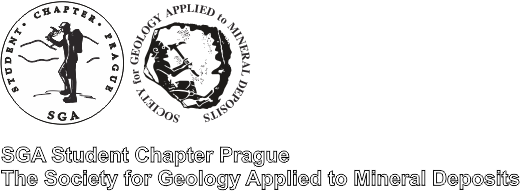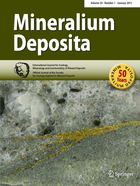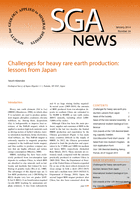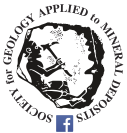
At the end of October 2021, the SGA student chapter in Prague held a three-day autumn excursion focused on a mining district Zlaté Hory in Jeseníky mountains and its surroundings. The area is composed of Variscan metamorphic rocks like phyllite, micaschist, paragneiss, orthogneiss, amphibolite and limestone, which were formed from Cadomian (~570 Ma) to Variscan (~300 Ma) times. The polymetallic VHMS deposit occurs in metamorphosed Devonian formations and is currently a matter of exploration for possible gold mining.
1st day. History of Au, Fe and Mo mining in the Zlaté Hory region.
The first day was focused on surface signs of previous mining and was lead by Dr. Josef Večeřa. These are dominated by placer mining marks like pits, hollows and canals as well as underground mining marks like pits and adits. The researchers were able to define three stages of mining based on different mining techniques – medieval, modern and 19th century. Interestingly, the different stages are commonly seen at a single locality. For example, in Hláska forest near Ludvíkov village, there are several pits following a single ore bearing structure and depending on the distance between particular pits, it can be inferred, whether they correspond to the medieval or modern period. Consequently, we visited a locality near Vidly village where we found several minerals related to iron ore which was mined until 18th century, including magnetite, hematite, specularite and jasper.
2nd day. Minerals collecting in mine Zlaté Hory – west; “Blue drift”.
On the second day, we went down into the Zlaté Hory – west mine, where the current exploration takes place. The walk to the end of the drift was nearly 4 km long, unfortunately the oxygen level detector did not allow us to stay there for a longer time and search for minerals. However, during the 4-kilometer walk we still managed to find several appealing minerals, for instance pyrite, galena, sphalerite, cerussite and copper. On the way back, we entered the “Blue Drift”, which is called blue for the intriguing blue colored allophane covering the walls. After a few hours in the mine, we visited local museum with a nice exposition of minerals and rocks found in the area.

3rd day. History of mining – open-air museum.
On the third day morning, we visited an outdoor museum dedicated to old miners and old mining techniques. We learned about their lifestyle and tools they used for daily life as well as the methods and equipment applied for gold obtainment. At the end, we were encouraged to find some gold with a gold washing pan in the arranged containers with sand and water. The most adventurous of us could not resist despite the freezing water and managed to find a few gold grains. Finally, with minds full of new experience and bags full of new minerals, we returned back home.


Děkujeme IGCP 682 – MINE TAILING REVALORIZATION (Duration: 2019-2021) za finanční podporu, která přispěla k organizaci této exkurze / We thank IGCP 682 – MINE TAILING REVALORIZATION (Duration: 2019-2021) for its financial support, which helped to organise this excursion.







